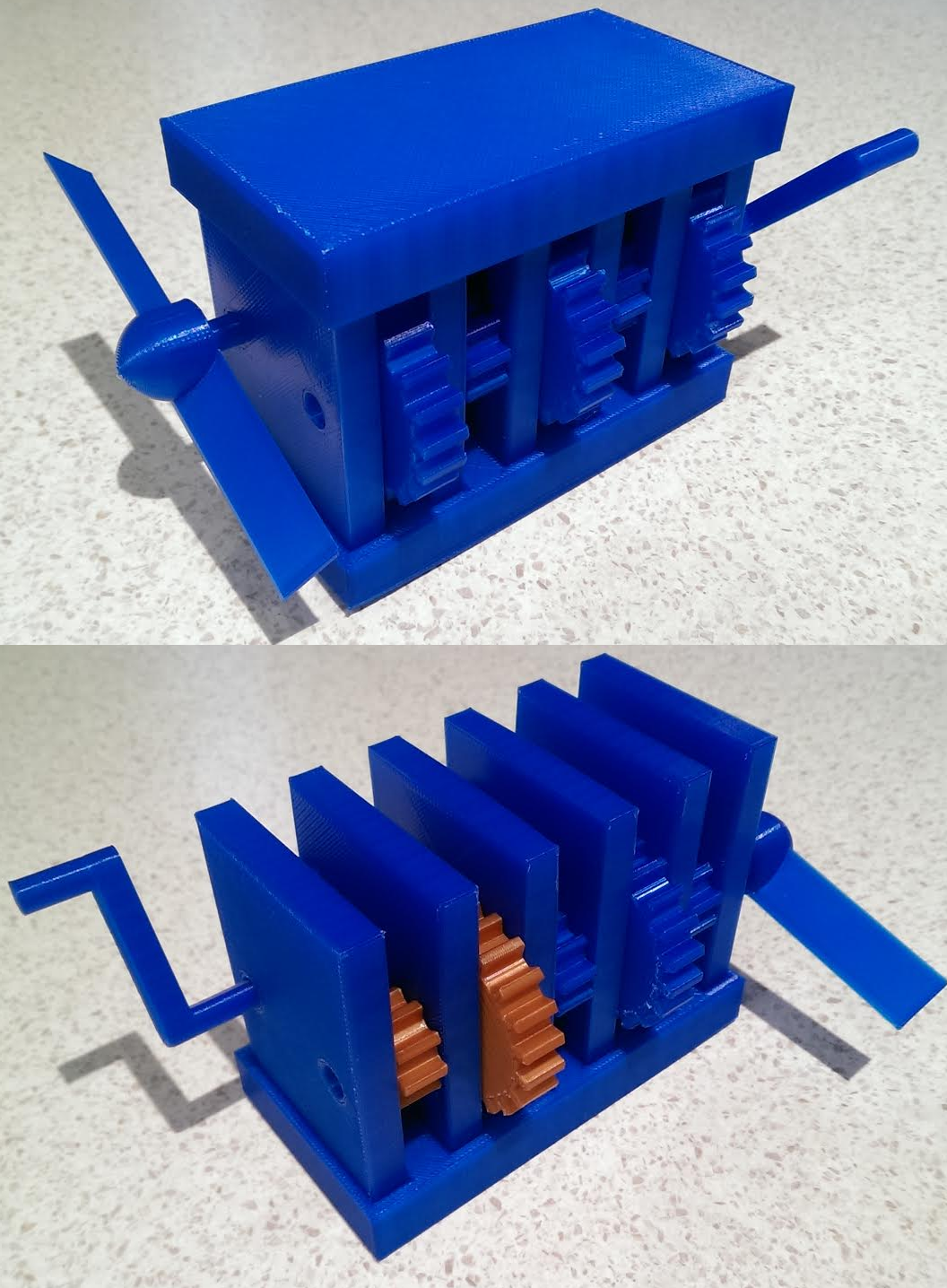I personally believe that 3D printing is enormously useful in the teaching of Science, Technology, Engineering and Mathematics (STEM). From the early years of high school up through university, the ability to handle mechanical parts and really appreciate forces, torques, mechanical ratios and energy conversion are all able to be easily produced in 3D.
To demonstrate this to educators, here is something I quickly modeled up and printed to show how having tangible objects helps students better understand and become interested in STEM subjects
This 5-stage gearbox demonstrates a variety of engineering principles effectively beyond what a textbook could such as;
- How gears can increase or decrease RPM of a system
- How gears can reverse the direction of rotation relative to the input
- Feeling the significantly higher torque required to drive the system forwards instead of reverse
- Mechanical backlash and the importance of tooth design
- Inertia of a system and the dangers of stopping it too fast
This is merely one example of a piece I designed to show these principles. In a classroom setting, I imagine a scenario where students are tasked to create their own gearbox to achieve a desired RPM multiplication, within a set number of stages and to turn in the correct direction. When using basic CAD programs for simulation and designing gears students will quickly learn the importance of correct tooth design.
The real value of 3D printing for students isn’t to give them a machine and say ‘go download a model from thingiverse and learn how a printer works’. The value is in giving kids tangible options to understand concepts that are really difficult to grasp and more importantly, give them the ability to design and print their own solutions. This gearbox I made I want to inspire educators to come up with ideas to show students how they can better understand how mechanical things work around them. Every time someone says ‘when am I going to use algebra in life!’ you ask them how do you think that fan on the ceiling works, how is it controlled? What equations were used to govern the exact speed it spins at?
There are endless things that printing can be applied to to demonstrate normally ‘boring’ subjects, I hope others can share useful ways that 3D printing helped students become more interested in STEM subjects since that is such a critical need in society today.
